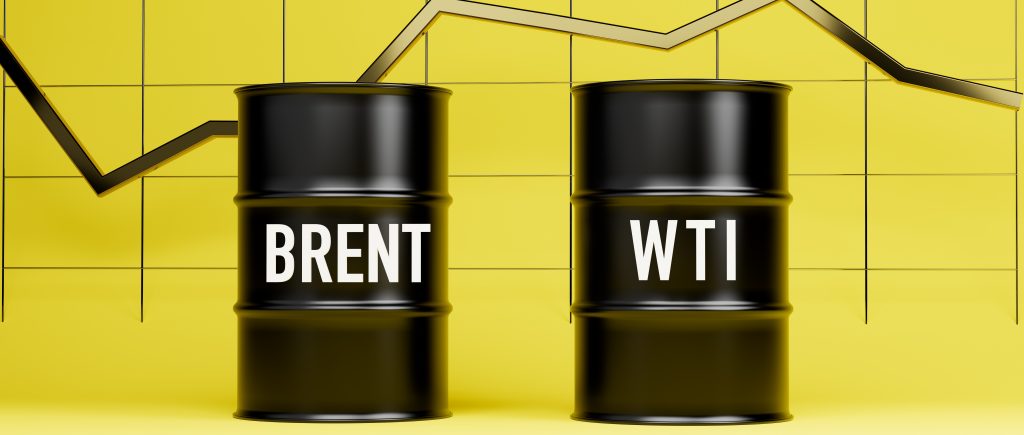In 2023, the global oil markets underwent a transformative journey, shaped by a confluence of factors ranging from the lingering impacts of the COVID-19 pandemic to geopolitical events such as Russia’s invasion of Ukraine. This tumultuous backdrop precipitated a realignment of benchmark crude oil prices, reshaping global trade flows and prompting a surge in upstream investments.
The aftermath of the COVID-19 pandemic and geopolitical tensions, particularly Russia’s incursion into Ukraine, played pivotal roles in recalibrating global oil markets. Benchmark crude oil prices returned to pre-war levels, and there was a notable reshuffling of global trade dynamics. Advanced economies experienced a slowdown in oil demand growth, but upstream investments reached their highest levels since 2015.
In 2023, China emerged as a major player, experiencing a significant surge in oil demand following the easing of COVID-19 restrictions. However, forecasts for 2024 signal a substantial slowdown, with projected growth of only 500,000 barrels per day, marking a departure from the impressive 10% growth rate witnessed in the preceding year.
This deceleration is attributed to China’s normalization of economic activities and a strategic shift toward sustainability and efficiency in energy policies. Notably, the emphasis on renewable energy and electric vehicles is expected to reshape China’s oil consumption patterns, even though the petrochemical sector remains a driving force behind the nation’s oil demand.
Long-term forecasts by the CNPC’s Economics and Technology Research Institute project China’s oil demand to peak by 2030, with a significant contribution from the petrochemical sector. Beyond 2030, a gradual decrease in oil consumption is anticipated, aligning with global trends favoring cleaner energy and increased efficiency. China’s evolving energy landscape presents both challenges and opportunities in the broader global oil market.
Non-OPEC+ countries, including the United States, Brazil, and Guyana, played a pivotal role in increasing global oil supply, while OPEC+ countries focused on capacity building, notably in Saudi Arabia, the UAE, and Iraq.
The International Energy Agency (IEA) revised its oil demand growth forecast for 2024 to 930,000 barrels per day (bpd), contrasting with OPEC’s projection of 2.25 million bpd. This shift in forecast reflects a global trend toward lower-emission energy sources and improvements in energy efficiency.
Anticipated shifts in global oil demand highlight the growing influence of the petrochemical sector, with advancements in electric vehicle (EV) sales and energy efficiency improvements playing pivotal roles in shaping consumption patterns. As the world navigates this evolving landscape, the global oil market is poised for continued transformation, presenting challenges and opportunities for industry stakeholders.
2024
As the global oil market charts its course into 2024, it faces a myriad of challenges stemming from economic and geopolitical uncertainties. The interplay of various factors has the potential to significantly impact market volatility, presenting both risks and opportunities for stakeholders. Key elements that warrant careful consideration include geopolitical tensions, economic uncertainties, climate policies, market speculation, supply-demand dynamics, technological advancements, and Angola’s exit from OPEC.
Geopolitical Tensions:
Ongoing conflicts in oil-producing regions, particularly in the Middle East, stand as a persistent threat to global supply chains. Recent events in the Red Sea, with attacks on cargo vessels, underscore the oil market’s vulnerability to geopolitical events. Instability in regions such as Venezuela and Iran further contributes to the uncertain supply outlook, creating an environment where geopolitical risks could catalyze market fluctuations.
Economic Uncertainties:
The global economy faces a complex set of challenges in 2024, including the looming potential for recession in key economies, fluctuating currencies, and diverse fiscal policies. These factors can lead to unpredictable oil demand and have a direct impact on prices, as economic uncertainties reverberate through the interconnected web of global markets.
Impact of Climate Policies:
International initiatives such as COP28 and the broader global shift toward renewable energy and climate policies signal a significant trend in reducing reliance on fossil fuels. This transition poses a long-term risk to oil demand, as countries worldwide increasingly adopt sustainable practices and diversify their energy portfolios, potentially reshaping the oil market landscape.
Market Speculation:
Speculative trading remains a potent force in oil markets, capable of inducing short-term price volatility. Market sentiment, reactions to news, and data releases can sway investor behavior, contributing to sudden and unpredictable shifts in oil prices. Navigating this landscape requires a keen understanding of the psychological factors influencing market participants.
Supply-Demand Imbalance:
The delicate equilibrium between oil supply and demand is susceptible to disruptions in major oil-producing countries or significant shifts in consumption patterns. Any abrupt changes in these dynamics can have an immediate impact on oil prices, underscoring the importance of closely monitoring global supply and demand trends.
Technological Advancements:
Innovations in renewable energy and the rising prominence of electric vehicles represent a transformative force that may gradually reduce dependence on traditional oil sources. As technology advances, the oil market must adapt to evolving consumption patterns, with potential implications for long-term demand and pricing.
Angola’s Exit from OPEC:
The recent decision by Angola to exit OPEC adds a layer of complexity to oil market dynamics. This departure may influence OPEC’s future production strategies and market stability, requiring a reassessment of how the organization navigates its role in the evolving global oil landscape.
Conclusion:
In 2024, the global oil market is confronted with a multifaceted landscape of risks and uncertainties. Navigating these challenges requires a nuanced understanding of geopolitical events, economic trends, climate policies, market dynamics, technological shifts, and the implications of Angola’s exit from OPEC. Industry participants must remain vigilant and adaptive in the face of these variables to secure a resilient and sustainable future in an ever-evolving oil market.
Technical Analysis
In the weekly chart of Crude Oil (WTI), a compelling symmetrical triangle pattern has taken shape. This pattern, characterized by converging trendlines, unfolds with the upper trendline connecting three lower highs at $130.5, $123.68, and $95.03, while the lower trendline links two higher lows at $64.36 and $72.56. Significantly, the price point of $93.87 serves as a pivotal level within this intriguing formation.
Symmetrical triangles often herald a phase of consolidation and indecision, setting the stage for an imminent breakout that will define the future trend of the asset. The width of the triangle acts as a valuable reference point, offering insights into the potential magnitude of the price move following the breakout.
Key Insights from the Pattern:
Traders and investors are advised to pay close attention to trading volume during the consolidation phase, recognizing that an upswing in volume during the breakout can serve as confirmation of the move. It is imperative for market participants to be well-prepared for the impending breakout, considering a spectrum of market factors to make informed decisions. An upward breakout may signal a bullish sentiment, while a downward breakout could imply a bearish bias in Crude Oil (WTI) prices.
The Role of the Pivotal Level:
The price level at $93.87 holds particular significance within the symmetrical triangle pattern, acting as a pivotal point that could influence the asset’s future trajectory. Additionally, the pivotal level at $79.50 underscores its importance in the overall analysis, reinforcing its role as a key reference point within the pattern.
Conclusion:
As traders navigate the weekly chart of Crude Oil (WTI), the symmetrical triangle pattern emerges as a compelling tool for technical analysis. The impending breakout presents an opportunity for market participants to position themselves strategically, considering the broader market context and potential implications for Crude Oil prices. The symmetrical triangle, with its converging trendlines and pivotal levels, serves as a roadmap for traders seeking insights into the dynamic and ever-evolving landscape of the energy markets.
 Noor Trends News, Technical Analysis, Educational Tools and Recommendations
Noor Trends News, Technical Analysis, Educational Tools and Recommendations





